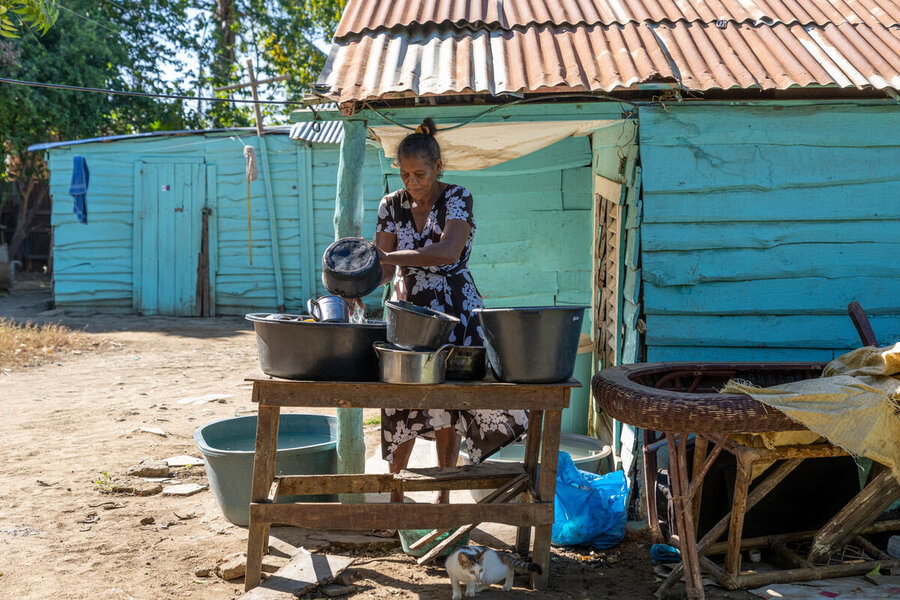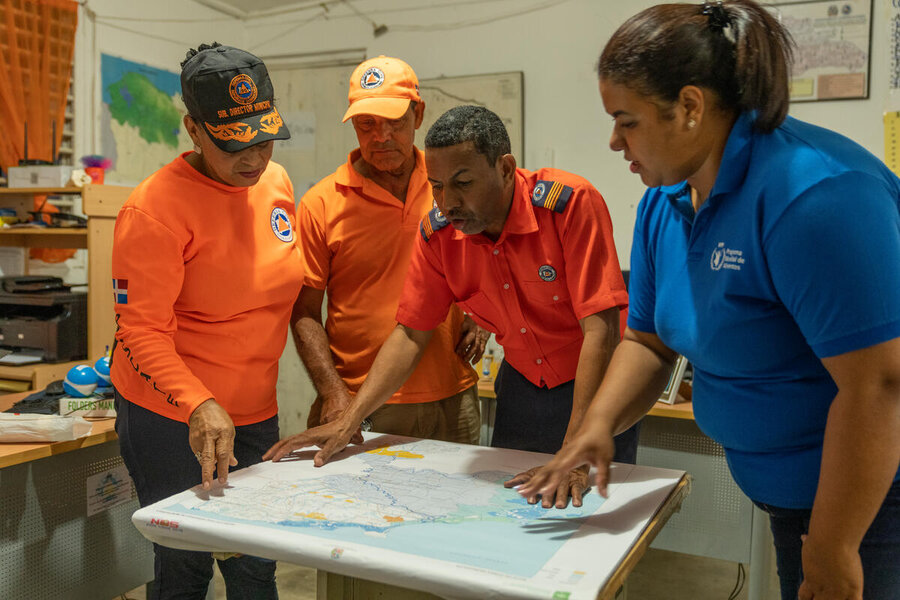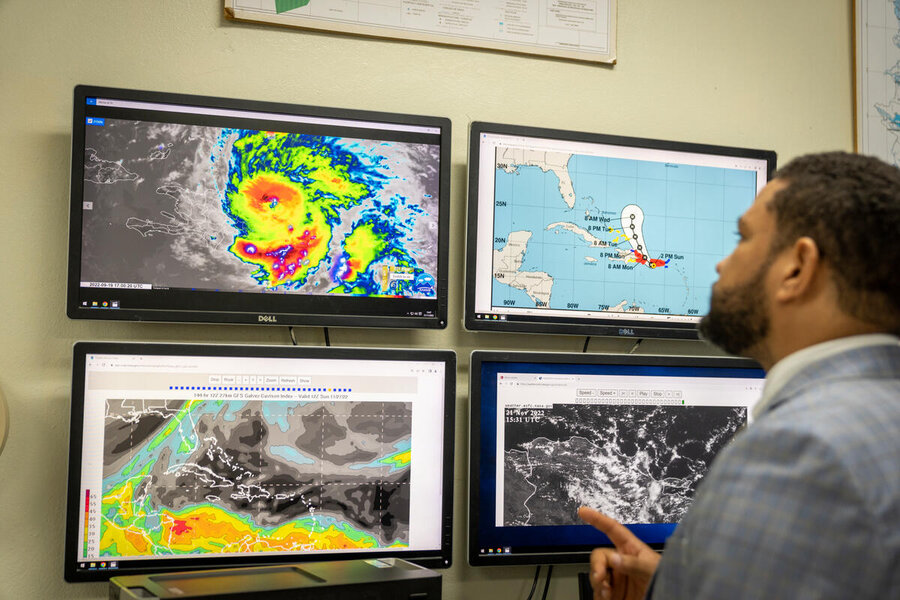As storms batter the Dominican Republic, its people are better prepared

At 69, Olga Lima has seen her fair share of droughts, floods and hurricanes in her native Dominican Republic. As she prepares lunch one recent morning, she recalls last year’s disasters that left her community reeling.
First a storm pummeled her town of Castañuelas, 20 km from the country’s northern coast. Then came Hurricane Fiona, which swept across the island nation in September 2022, killing two people and displacing more than 12,000.
“The streets turned into a river. It took more than 15 days for the water to leave town,” says Olga, a widow who lives with two adult grandchildren. “Animals died drowning. It made me feel sad.”
This year, Dominicans like Olga are better prepared to weather the current Atlantic hurricane season, which runs from June to November, thanks to a World Food Programme (WFP)-supported scheme emphasizing forward thinking and planning.

Known as anticipatory action, the initiative uses weather forecasts to trigger initiatives that shore up people’s resilience - such as distributing cash to those who may be affected, before an extreme weather event hits.
“It’s extremely important to work together with different institutions at national level, but also with people working in the field, to have a joint response towards these climate shocks,” says WFP Country Director, Gabriela Alvarado.
Today, WFP and partners are supporting the development of early response plans for more than a half-a-dozen other Latin American and Caribbean countries in the region - including Colombia, Peru and Haiti. In some, we work to embed these plans into national social protection systems and to strengthen preparedness and protection of at-risk people through disaster insurance and forecast-based financing.

In the Dominican Republic, one of the first countries in the region where WFP supported early response efforts, WFP also delivers emergency food assistance after shocks hit.
As a result, authorities were better prepared last year, as Hurricane Fiona approached the Dominican shores. WFP had worked with the national meteorological office to strengthen its weather monitoring network. New weather stations helped speed up the data gathering and processing, key to timely and accurate forecasting.
New initiatives underway
Authorities additionally sent early warning texts to 1,300 families living in the expected path of the storm, along with recommendations on how to protect themselves and their assets. And WFP sent wire transfers amounting to US$150 to more than 400 families, including Olga’s, to purchase food and other basics before Fiona made landfall.

Olga used the money to buy emergency supplies and even go to the doctor. “I paid a debt I had with a store,” she adds, “and I bought some food and medicine with what was left.”
Today, WFP and Dominican social protection authorities aim to pilot more preemptive actions in other communities in the country’s northwest - for example, by establishing safety nets that distribute vouchers redeemable for food, household items and tools, as part of the national emergency response.
“We are modeling these types of actions to demonstrate their positive effects and incorporate them into the country’s social protection strategy,” says Gloria Reyes, who manages the Government’s social protection programme.

Back in Castañuelas, Olga is mindful that another extreme weather event may hit again at any time. But she is confident she’ll be prepared.
“In the past, I stayed home because I didn't want to lose my belongings and my food - even if it was dangerous,” Olga says. “But today I can leave my house and go to an emergency shelter with more peace of mind, and my family will have food to eat.”
WFP’s Anticipatory Action programme in the Dominican Republic is funded by Germany (GFFO) and the European Union (ECHO).
